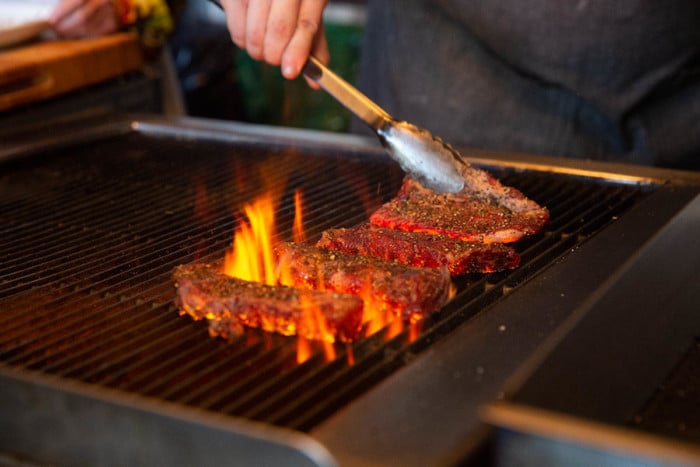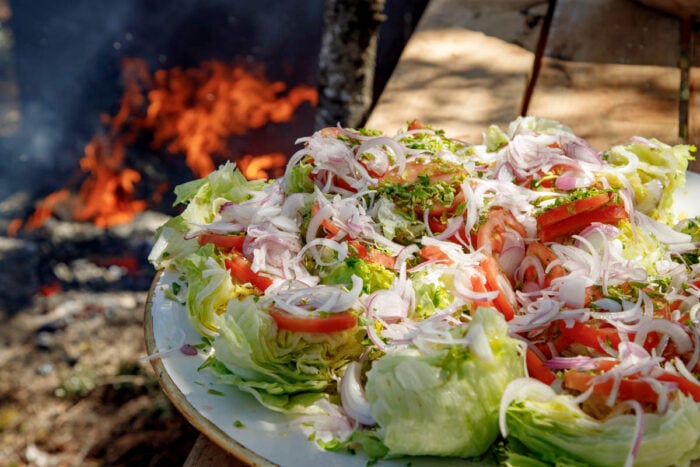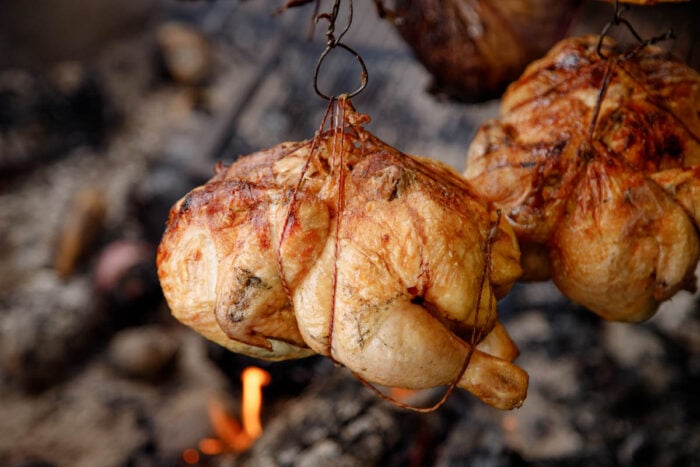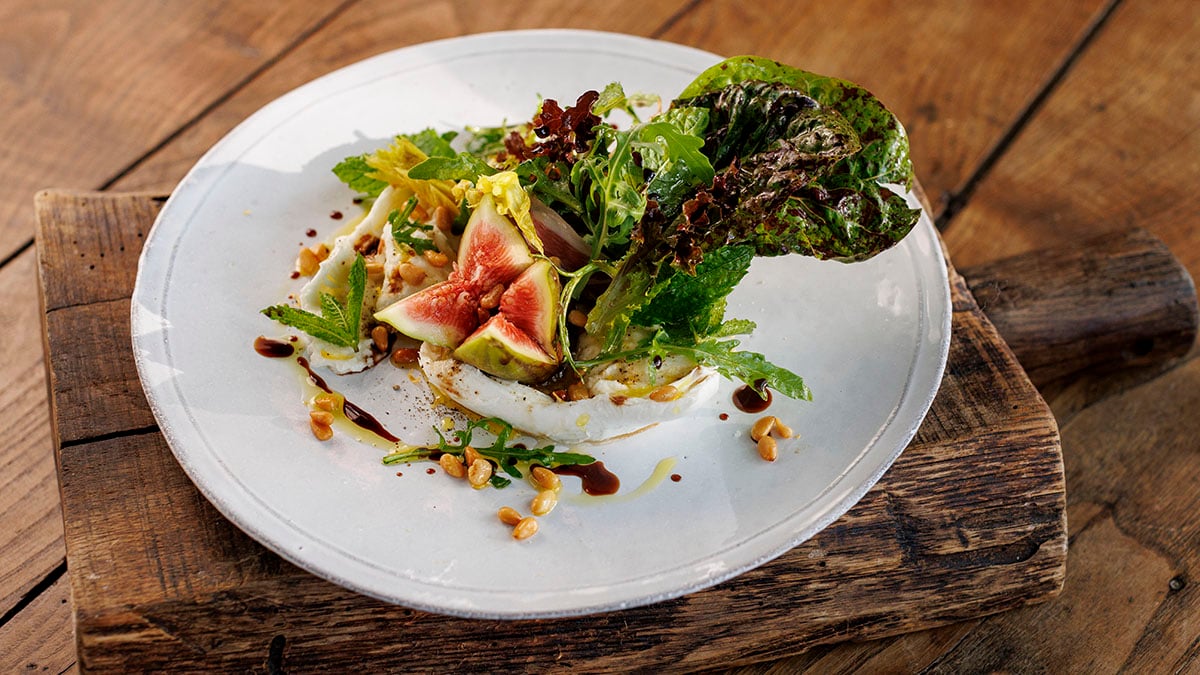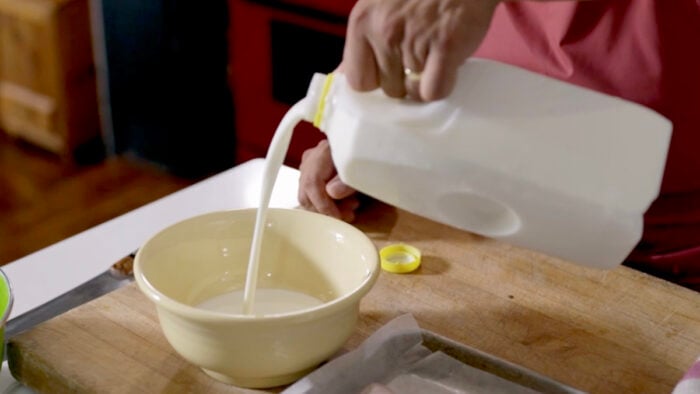
The Difference Between Stocks And Broths
Written by the YesChef staff


Get Access to an Ever-Growing Library of Classes
Every Subscription includes:
- Unlimited Streaming of all Classes
- Watch on your phone, tablet or laptop
- Story-driven Classes, Practical Lessons
- Recipes with Step-by-Step Guidance
- 30-day Satisfaction Guarantee
- New Lessons added all the time
$9.99/mo
Billed annually

Similarities Between Stock and Broth
What is Stock?
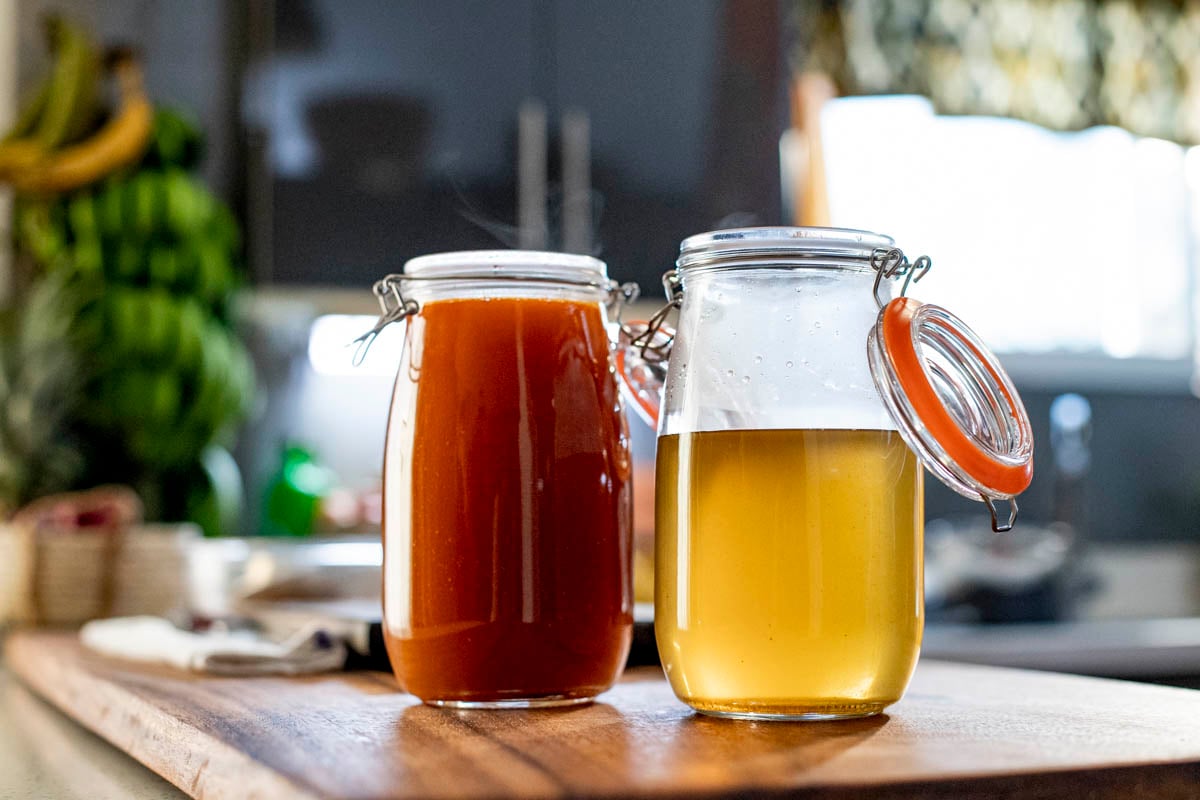
What is Broth?
Stocks vs. Broths: How Are They Different?
In a stock, the main ingredients are typically leftover animal bones that were used during a previous cooking session. These bones and / or vegetables are then cooked for a long time in order to release all the ingredients’ flavors as well as their collagen, a healthy protein naturally found in the flesh, bones, and connective tissue of animals. Compared to a broth, stocks are typically thicker and must be cooked for a longer period of time to bring out their ingredients’ flavors.
While the key ingredient in stock is animal bone, the main ingredient in broth is animal meat. Broth is sometimes made by boiling chicken breast – or shellfish or vegetables – in water. The result is a liquid you can drink by itself as opposed to a liquid like stock, which is meant to add flavor or be used as a base for other dishes. Breaking down the difference between a stock and broth, Kwame calls stock the “base level” liquid for a broth. A broth is created, he says, when you introduce meat to – and continue to season – the stock.
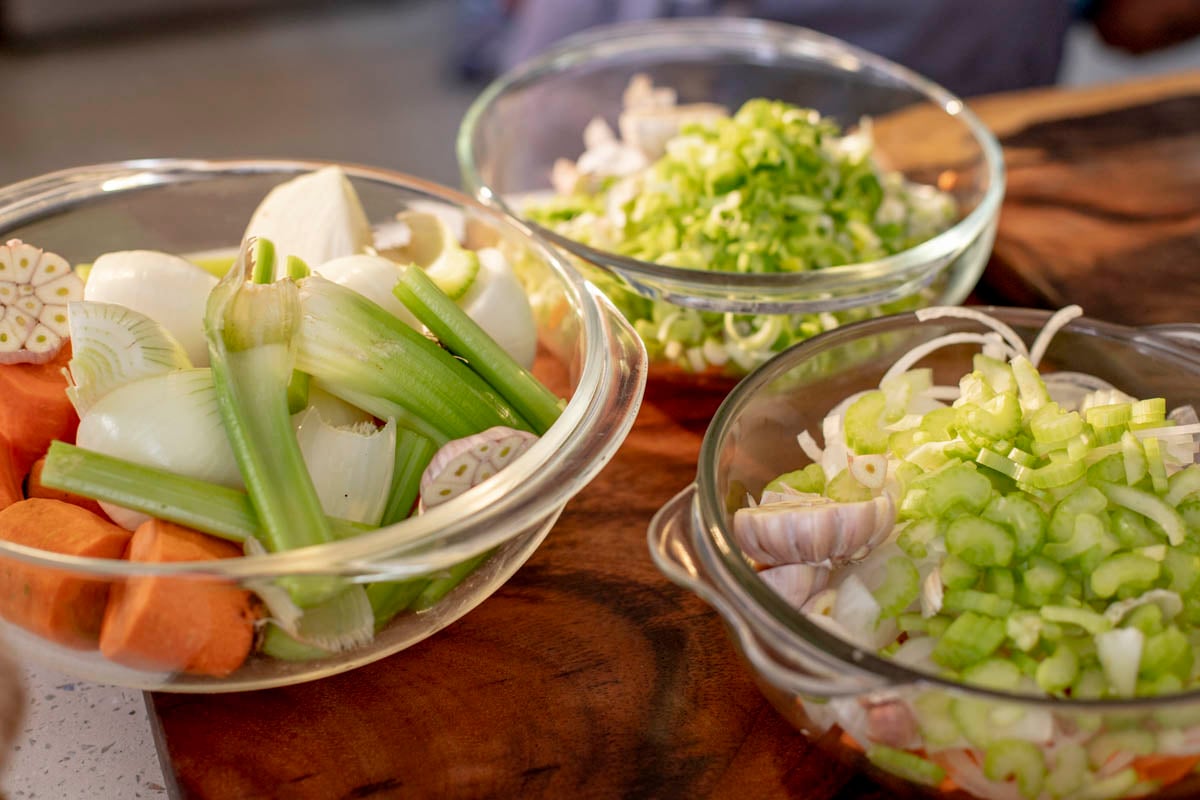
Store vs. Homemade Stock
Ways to Make Stock

What Foods Commonly Use Stock?
What Foods Commonly Use Broth?
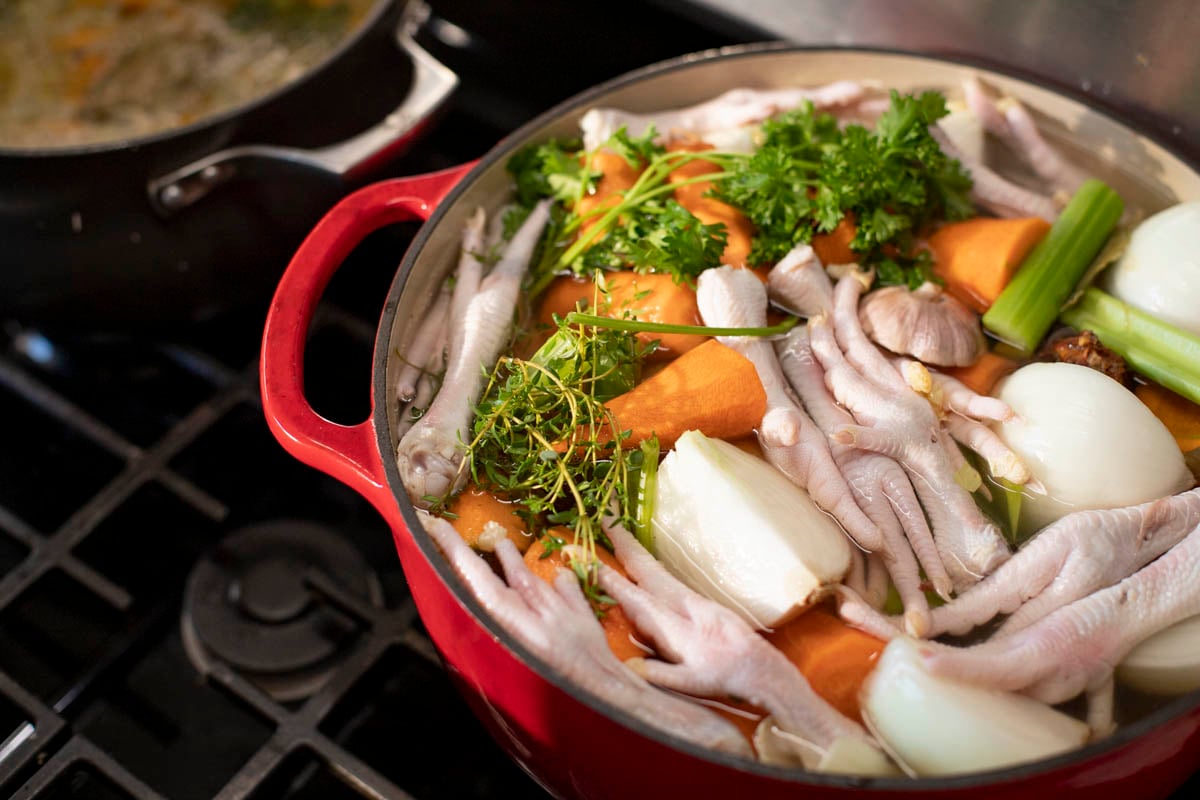
Types of Stock & How To Make Stock
In his YesChef lesson, Kwame makes three types of stocks simultaneously: chicken stock, vegetable stock, and shrimp stock. Here are some of the steps to making your own versions of these types of common stock.
Chicken stock: One great way of creating homemade chicken stock is to use a leftover chicken carcass that you have stored away in your freezer. It’s a great way of avoiding waste in your cooking, although it requires advanced preparation. Another alternative is to use the carcass of a chicken whose meat you are presently cooking. Before making chicken stock, be sure to clean all of the chicken parts you are using really well.
When making his chicken stock, Kwame roasts a whole chicken and the bones of chickens’ backs on extremely high heat until they’re golden brown. In a pot, he covers the complete chicken and the chicken back bones with large fresh vegetable chunks including carrots and celery along with herbs like peppercorn, thyme, and bay leaves. To boost the richness of the stock – and boost collagen levels – Kwame tosses chicken feet into the pot, submerging all of it in water. “There’s something about making chicken stock,” he says, “that always makes me very, very happy.”
Vegetable Stock: In addition to being an excellent vegetarian staple that can be a base for vegetarian soups and rice dishes, vegetable stock is also a smart and eco-friendly way to use your leftover vegetable scraps. When making his vegetable stock, Kwame chops and dices a variety of fresh vegetables – carrots, onions, garlic cloves, celery, leeks – and puts the vegetables in the pot before adding herbs like thyme, peppercorns, and parsley.
Fish / Seafood Stock: The leftover bones, carcasses, and heads of fish can be awesome ingredients to put in your stock. For his shrimp stock, Kwame uses shrimp along with tomato paste and shrimp shells, plus celery and sliced carrots. After his stock cooks, (shrimp stock should simmer, not boil, Kwame makes clear) Kwame strains it twice and lets it cool in a Mason jar. Kwame tells us that when making fish, anything you discard – except for the guts – can be used in your stock. Fish heads are great, Kwame says, as are bones. Shrimp shells contain loads of unlocked flavor, he adds. “People throw them out,” Kwame says sadly of shrimp shells. “It’s such a waste.”
Beef Stock: Beef stock is a great base if you want to make a stock with a rich, complex flavor. Tasty foods that you can make with the aid of beef stock include gravies, soups, braised short ribs, and beef pho. Common ingredients that can contribute to an excellent beef stock include beef joints, beef knuckles, and feet as well as onions and carrots.
How to Store Stock
When your stock is ready, strain it through a colander or sieve. Kwame strains his stock twice using a colander, which pushes flavors through that are “locked in the vegetables,” he says, and lets it cool in a Mason jar. Cooling your stock at room temperature before freezing or refrigerating it is important to stop bacteria from forming. Be sure to skim the fat off the top of your stock – if it’s a meat stock, that is.
If you are going to have the stock for a while, store it in the freezer. It can be kept in Ziplock bags, ice cube trays, yogurt containers, or in glass jars; just don’t fill it too close to the top because the jar could break.
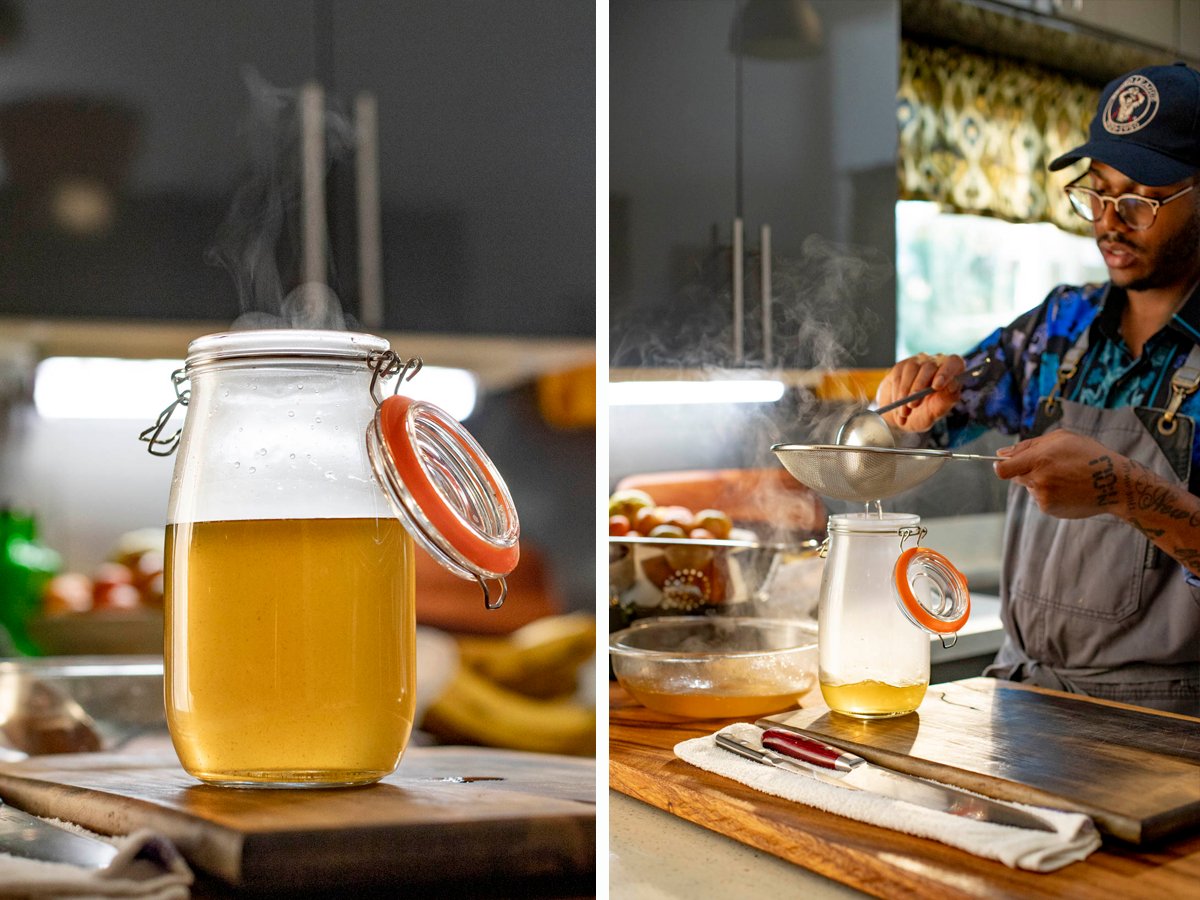
Stock Health Benefits
Simmering bones in water for a while to make a protein-rich bone broth is extremely healthy. That’s because when a stock cooks, it soaks up the vitamins, minerals, and collagen protein that’s found naturally in animal bones. And collagen, when it’s boiled, is broken down into gelatin, a protein believed to possess many health benefits. Gelatin is thought to be good for your skin, digestion, joints, bone density, immunity, and sleep. The longer your stock cooks, the more collagen will be released from the bones – and the more nutrient-rich the stock will be.
The nutritional value of a given stock is also based on what ingredients you add to it. The more herbs and vegetables you add to your stock, the more minerals and vitamins the liquid will accumulate. Health-wise, the best sort of animal bones to put in a stock are feet and knuckles. For an even more powerful nutritional punch, add a variety of vegetables, grains, and herbs to your stock, too.
Broth Health Benefits
Chicken broth, a base for chicken soup, is the ultimate cold and flu cure-all. It’s light, warm, and doesn’t have a lot of calories. For these reasons, broth is excellent nutritionally and therapeutically for people who are sick and don’t have a great appetite.
Why is broth so good for you? For one thing, it contains many essential fatty acids and proteins which are beneficial for your skin, muscles, and more. Chicken broth, in particular, is heavy in many vitamins, antioxidants, and minerals like iron and selenium, which is known to help lower cholesterol levels.

Professional Stock Tips and Tricks
- Invest in broad market-based funds – oops, wrong type of stock tips. Sorry! Making flavorful stock (for your food dish) commonly begins with a mixture of aromatic vegetables known as mirepoix. These vegetables often include celery, carrots, and onions. They do not wind up in the final dish but are used to add flavor to the stock.
- For animal parts, use various tendons and bones and cut them. Their gelatin will intensify the stock’s flavor. The best part of an animal carcass with which to make stock is gelatin, or connective tissue, like chicken feet and wings. These animal parts make a stock thicker and more gelatinous. Also yielding a thick stock are fishbones and fish heads.
- If the flavor of roasted bones is too strong, but you want to achieve the dark color that the bone-roasting method creates, you can use burnt onions and tomatoes instead.
- A crafty professional tip from Kwame: Store your stock in an ice cube tray in your freezer, and you’ll have “perfect portions to make sauces on the fly.”
Stocks and Broths: The Perfect Cold Weather Foods
The winter months, with their short cold days and their long, dark, bone-chilling nights, are the best and most important time of year to make stock or broth. They keep you warm – satisfying both the body and the soul – and are perfect for repurposing the discarded parts (like turkey carcasses and vegetable scraps) from your major holiday dinners. Chicken stock or vegetable stock, as well as bone broth, are terrific for making a nutritious and satisfying soup or to improve the flavor of a bigger warm dish while you watch a football game on TV or watch the snow fall outside your window.
In addition to the soul-boosting benefits of making a big, flavorful pot of homemade chicken stock or vegetable broth to warm you up on the chilliest of nights, it’s also a great way to save money, eat healthfully, and reduce food waste. Your turkey carcass from Thanksgiving or Christmas can be stored in the freezer and made into a delicious homemade stock. Your leftover New Year’s Eve pot roast or all of your unused vegetable rinds can be frozen all winter, brought out to thaw, and then cooked into soup as needed.
Stocks: Chicken, Vegetable & Shrimp
Ingredients
Recipe


